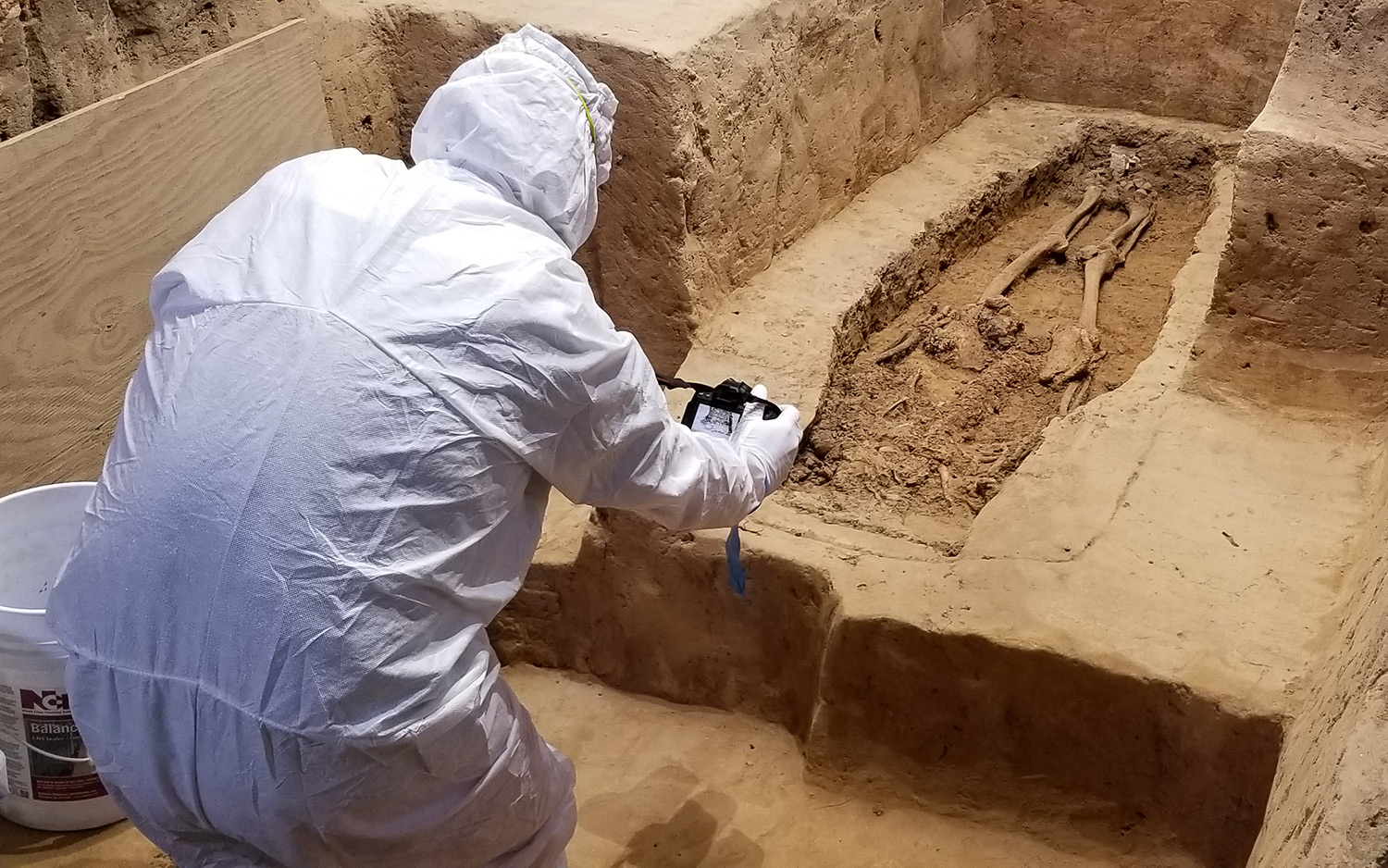Headless Body Might Be One of America's 1st Politicians … and Slave Owners
The skeletal remains might belong to George Yeardley.

Archaeologists digging in a 400-year-old church in Jamestown, Virginia, have found a headless body that might be that of Sir George Yeardley, one of the first politicians — and slave owners — in the American colonies.
Few people have heard of Yeardley, but he played a key role in America's history. The Jamestown governor oversaw the House of Burgesses, the first elective governing body in the English colonies.
Scientists still aren't sure if the headless body is Yeardley's, but shortly after uncovering the skeleton, they made another finding that could help answer that question. They discovered a handful of teeth, 10 in all, on Sunday (July 22) that fit into a skull previously unearthed in the church. [In Photos: New Jamestown Settlers Identified]
If DNA from the teeth and skull matches that from Yeardley's living descendants, then scientists will be able to identify Yeardley's body. By analyzing the skull's contours and tooth plaque, researchers may also be able to re-create his face and determine what kinds of food he ate, The Washington Post reported.
"We have a lot of world-renowned experts working with us on this," Mary Anna Hartley, a senior archaeologist with Jamestown Rediscovery Foundation, told The Washington Post. "And I wanted to make sure there was something for them to examine."
For instance, Turi King, a geneticist and archaeologist at the University of Leicester in England, who helped identify the remains of King Richard III after they were discovered under a parking lot in 2012, is working with the Jamestown team.
"We've been working under what’s known as clean conditions [at the church]," King told Live Science. "One of the biggest things we're worried about is contaminating the site with DNA from one of us. When I'm getting DNA from an individual, we want to make sure it belongs to that individual and not to me or another archaeologist."
Get the world’s most fascinating discoveries delivered straight to your inbox.
Jamestown rediscovered
The church excavation is part of a project run by the Jamestown Rediscovery Foundation, in collaboration with the Smithsonian Institution, to learn more about Jamestown, the first successful permanent English settlement in the American colonies. The community was founded in 1607 and originally called "James Cittie," according to Jamestown Rediscovery Foundation.
Yeardley didn't come to Jamestown until 1610 (he left London in June 1609, but a hurricane blew his ship off course to Bermuda). He became Jamestown governor in 1616, at the age of 29. He was later knighted by King James I in Britain, and then he returned to Jamestown with instructions from the Virginia Company, which controlled the colony, to create "a laudable form of government . . . [for] the people there inhabiting," according to historical documents, The Washington Post reported.
The plan worked. In June of 1619, a group of 30 men met at the church the archaeologists are now excavating.
That same year, America received its first group of enslaved Africans. The slaves, taken from Angola in west central Africa, were on a Spanish ship bound for Vera Cruz, Mexico, until two English privateer ships attacked and took up to 60 of the Africans to Point Comfort, in what is now Hampton, Virginia said David Givens, director of archaeology at Jamestown Rediscovery. Yeardley purchased eight of the people, Givens told Live Science.
With the 400th anniversary of both of these events approaching, archaeologists hope to learn more about Yeardley, starting with the identification of his body, the researchers said. Although the DNA work is yet to come, the skeleton does offer several clues: It comes from a robust man in his late 30s or early 40s, which would match Yeardley, who died at age 40, in 1627, the archaeologists told The Washington Post.
Moreover, the skeleton's hands are at its sides — not crossed over the pelvis — indicating that this burial was an important one, likely laid out so that people could see the body before its final burial, Hartley said. And in the early 1900s, people found a tomb slab engraved with knightly symbols in the church. Given that Yeardley was a knight, it's possible this limestone slab belonged to him, Hartley said.
She also noted that the burial is located in front of the church's altar, "a pretty prime spot to be buried," Hartley said.
The soil and artifacts at the burial match the right time period, Givens added. The team also plans to radiocarbon date the bones and do isotopic testing (an isotope is a variation of an element that has a varying number of neutrons in its nucleus) on the remains so that they can tell whether the individual drank water from England as a youth, he said.
Original article on Live Science.

Laura is the managing editor at Live Science. She also runs the archaeology section and the Life's Little Mysteries series. Her work has appeared in The New York Times, Scholastic, Popular Science and Spectrum, a site on autism research. She has won multiple awards from the Society of Professional Journalists and the Washington Newspaper Publishers Association for her reporting at a weekly newspaper near Seattle. Laura holds a bachelor's degree in English literature and psychology from Washington University in St. Louis and a master's degree in science writing from NYU.




